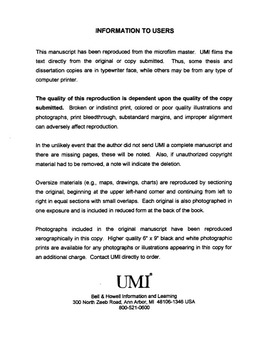| dc.contributor.advisor | Gipson, Richard C., | en_US |
| dc.contributor.author | Johnson, Todd Alan. | en_US |
| dc.date.accessioned | 2013-08-16T12:30:34Z | |
| dc.date.available | 2013-08-16T12:30:34Z | |
| dc.date.issued | 1999 | en_US |
| dc.identifier.uri | https://hdl.handle.net/11244/5838 | |
| dc.description.abstract | Using surface electromyography, this study examined the activity of flexor carpi u1naris and extensor carpi u1naris during execution of drumstick single, double, and buzz strokes. Subjects included 9 male and female undergraduate students with 2 months to 12 years of drum playing experience. Maximum voluntary contractions provided the basis for normalizing electromyographic data. Data from extensor activity produced unexpected results, but raised questions about the thoroughness of existing drumstick pedagogical literature. Data from flexor activity suggested that buzz and double strokes require more flexor activity than single strokes, and that for all three strokes, flexor activity in the dominant hand is either consistently more or consistently less than in the non-dominant hand. | en_US |
| dc.format.extent | vi, 104 leaves : | en_US |
| dc.subject | Drum Instruction and study. | en_US |
| dc.subject | Music. | en_US |
| dc.subject | Drum Methods. | en_US |
| dc.subject | Education, Music. | en_US |
| dc.subject | Drum set Instruction and study. | en_US |
| dc.subject | Drum set Methods. | en_US |
| dc.title | An electromyographic examination of wrist motion while executing selected drumstick techniques with matched grip. | en_US |
| dc.type | Thesis | en_US |
| dc.thesis.degree | D.M.A. | en_US |
| dc.thesis.degreeDiscipline | School of Music | en_US |
| dc.note | Major Professor: Richard C. Gipson. | en_US |
| dc.note | Source: Dissertation Abstracts International, Volume: 60-06, Section: A, page: 1821. | en_US |
| ou.identifier | (UMI)AAI9934637 | en_US |
| ou.group | Weitzenhoffer Family College of Fine Arts::School of Music | |
